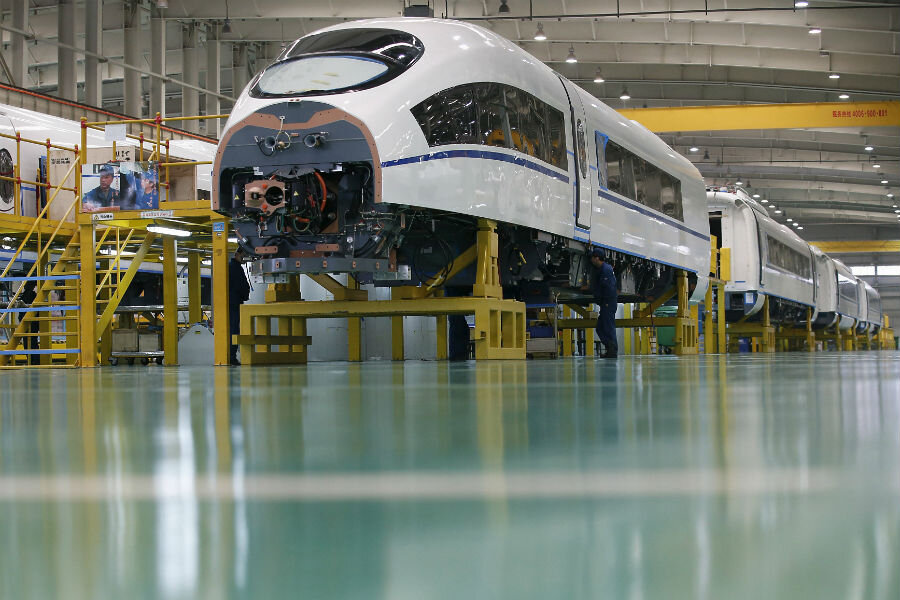Can new railways help put China's economy back on track?
Loading...
Citing a continued shift to the service sector and uptick in the property market, China on Tuesday moved to dispel fears about its slowing economy, a roller coaster ride that continues to be a nightmare for investors.
Despite rising pessimism on the country’s growth forecast, China’s official state-run news agency said that this year marked a series of economic improvements, particularly in boosting rapid consumption and investment in start-ups.
“Looking beyond headline growth numbers,” reported Xinhua, “positive changes have emerged and are expected to lay the foundation for sustainable long-term growth.”
Missing from these highlights was an important and loftier ambition outlined in China’s latest fiscal stimulus: to build more railways domestically and abroad, in a bid to expand China's influence and “open its door” to greater international involvement.
In the past decade, China’s high-speed rail industry has emerged as a state-of-the-art, sophisticated system, built on technology adapted from overseas and carefully reverse-engineered by locals.
“Since 2003, in a lightning national blitz, China has laid 10,000 miles of high speed track – more than half the world's total,” The Christian Science Monitor reported in February. “China wants to move its manufacturing base up the value chain from cheap clothes and toys that launched its economic boom to a technology-driven future.”
As of early this year, Chinese manufacturers were discovering that exporting trains can be a difficult process, reported the Monitor. International deals involve a complex mix of economic, political and cultural factors. Some experts said the Chinese industry was “still in the process of proving itself” to the international community.
But a peak point came this month as Chinese rail officials brokered a lucrative deal with US executives to build a 230-mile high-speed railway, connecting Los Angeles to Las Vegas. Some China watchers saw it as a sign that railways – already helpful to China's domestic development – were becoming good global business as well.
The Financial Times reports:
The network has facilitated the migration to cities that has done so much to fuel China's growth, as well as laying the foundation for rising property values beyond the first-tier cities.
Railway companies are already among the biggest beneficiaries of several new Beijing initiatives, including the Asia Infrastructure Investment Bank and the peculiarly named "One Belt One Road" programme. This will commission railways beyond China's own borders, down through Southeast Asia and across Central Asia. China is also exporting its rail expertise: in early September, China Railway Rolling Stock (CRRC) broke ground for a factory in the US where it will construct cars for the Boston subway system.”
Not all economists agree, however. Some say China's expansion into the field of the global rail business, however impressive, still marks “something of a great leap backwards. As Henny Sender wrote for the Financial Times, “Consumption and services were supposed to replace investment and manufacturing as the catalyst for growth. The return to old-style state spending on big projects could still prove to be a short-term measure."






